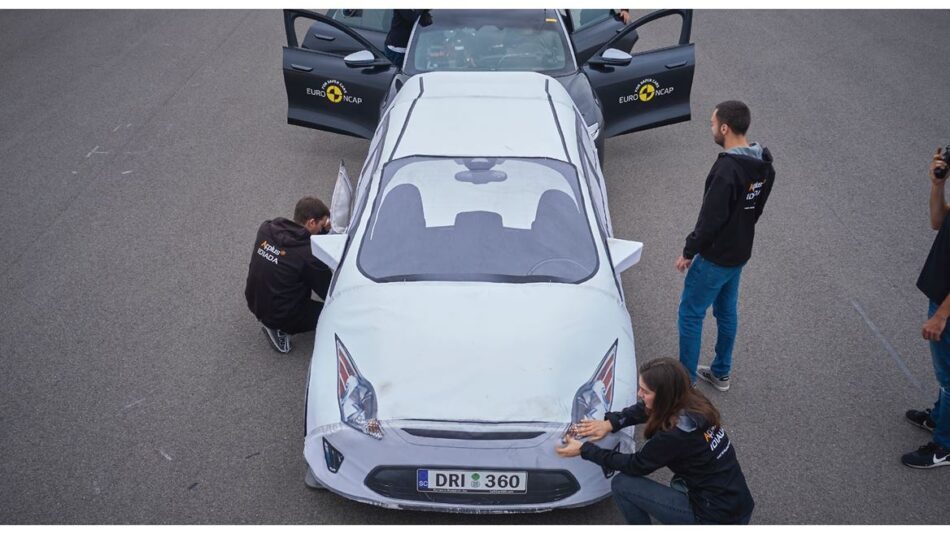Euro NCAP safety priorities of well−known car brands
Euro NCAP dusts off the safety priorities of well−known car brands

Today, Euro NCAP releases safety ratings for a range of new, but familiarbranded cars entering the European market.The Dacia Duster and SuzukiSwift score three stars whilst, the Mercedes-Benz E–Class, the VW Passatand its twin the Škoda Superb, and the Škoda Kodiaq, all achieve EuroNCAP’s top 5–star award. BMW’s X2 and Renault’s Espace and Rafale arerated as 5–star twins to 2022-tested cars.


Dacia’s ‘no-frills’ sales strategy is well-known, the brand having previously shunned active safety technology in favour of affordability. Suzuki has long been a manufacturer of small, simple, and affordable cars. It then becomes no surprise that the Duster and the Swift emerge from Euro NCAP’s tests with no more than three stars. However, legislation now insists that all cars must be equipped with autonomous emergency braking, emergency lane-keeping systems, intelligent speed limiters, and driver fatigue detection. The Duster and the Swift fulfil this obligation but do little more, despite having the technologies fitted. For active safety, Euro NCAP’s standards for 5-star ratings are considerably higher than those of legislation. Disappointingly, the cars’ occupant protection also shows limited ambitions, with similar, modest levels of adult occupant protection. For child occupant protection, Dacia’s Romanian- manufactured small SUV outperforms the tiny Swift, the latter providing protection that ranges from marginal to poor in some aspects of its performance.


The German and Czech offerings, by contrast, generally perform well across the board, the E-Class, Kodiaq, and Škoda -developed Passat/Superb twins collecting five stars apiece. All four provide exemplary levels of occupant protection, the Passat and Superb offering good protection to all critical body areas of both adult and child occupants across in all four full-scale crash tests. Nevertheless, the E-Class sails close to the wind in terms of pedestrian protection: with only a fraction of a point for pedestrian pelvis protection, it is uncomfortably close to losing a star against Euro NCAP’s latest protocols. The BMW X2 is rated as five stars against 2022 protocols as a twin to the X1 and like the E-Class, offers only poor pedestrian pelvis protection. The Renault Espace and Rafale are also awarded 2022 ratings, as twins to the Austral in that year.


“This latest release reveals a growing split between the safety ambitions of different car brands. The difference in star ratings is partly due to the segments in which the cars compete, but Euro NCAP also believes it is a matter of a brand’s priorities. Some, like Mercedes-Benz, Škoda, VW, BMW, and Renault, are convinced of their customers’ commitment to safety and its higher worth in the product offering. For Dacia and Suzuki, the emphasis is on affordability, but consumers should be in no doubt that there are competitor vehicles to the Duster and the Swift available on the market, which offer considerably higher levels of safety. This is something you cannot put a price on.”
Dr. Michiel van Ratingen, Secretary General Euro NCAP


The all-electric Mercedes–Benz G580 with EQ Technology is added as a variant to the G-Class tested in 2019.
Editor’s note
For full results, visit www.euroncap.com or Euro NCAP‘s newsroom for journalists. For media information, please contact Cordelia Wilson at [email protected].


Follow and share
Facebook
Instagram
LinkedIn
X
YouTube


About Euro NCAP
Euro NCAP organizes crash & safety tests on new vehicles and provides motoring consumers with a realistic and independent assessment of the safety performance of some of the most popular cars sold in Europe. Established in 1997 and backed by several European Governments, motoring, consumer and insurance organizations, Euro NCAP has rapidly become a catalyst for encouraging significant safety improvements to new car design.


Euro NCAP ratings strictly apply to vehicles of the specifications offered in Europe. The ratings do not necessarily apply to models offered in other regions, even when sold under an identical name, as production specification and equipment may vary.












